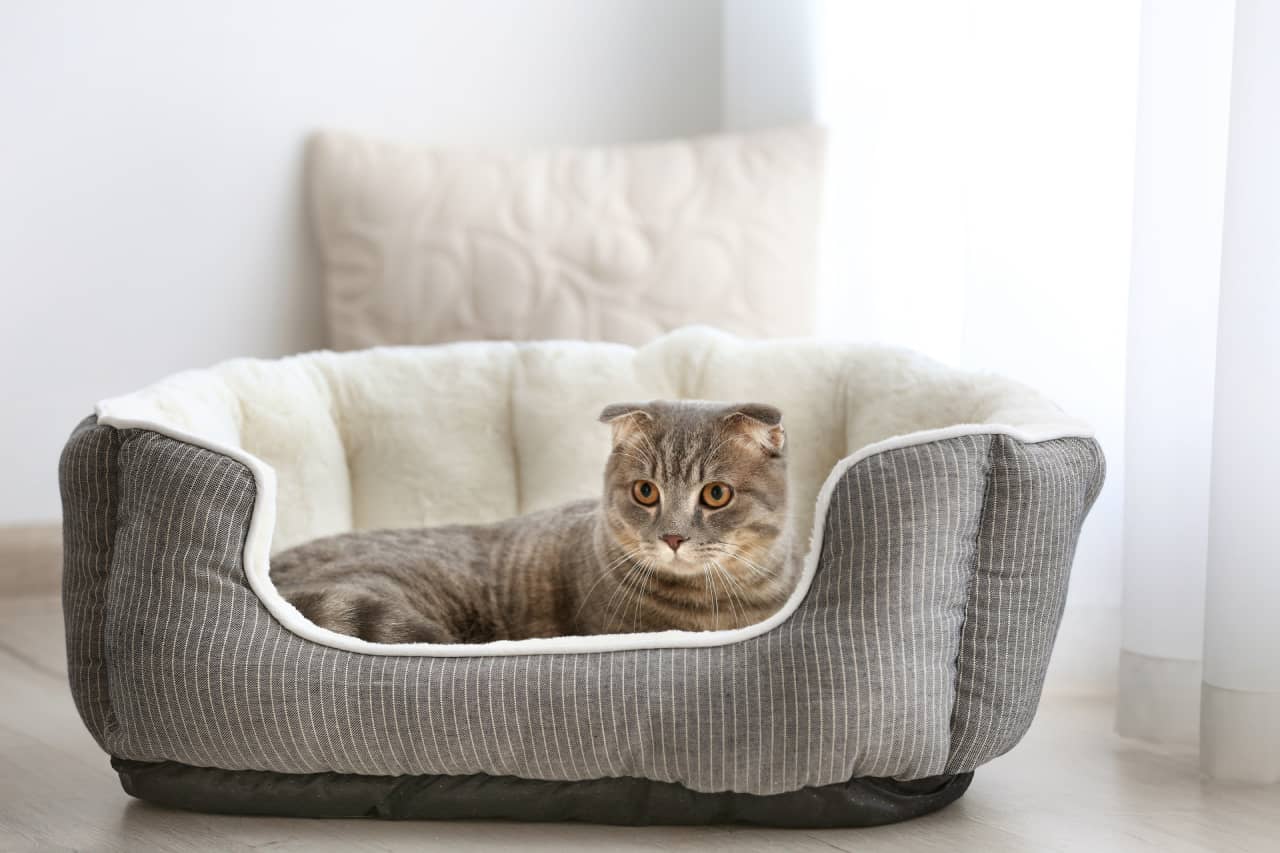Among all domestic animals, cats may be the ones who sleep the longest. It’s common for cats to sleep for long hours during the day, often taking ‘catnaps’ between activities. On average, an adult cat can sleep for up to 18 hours during the day. Then, they usually wake up before dawn to explore their surroundings, play, and even hunt for prey.
Because cats have a different sleeping schedule, it can be difficult for owners to tell if they’re getting enough rest. However, signs of restlessness, snoring, or lack of energy during the day may indicate that your cat may not be sleeping enough or getting the quality rest it needs. Like humans, your cat can also suffer from sleep deprivation.
There are many ways you can help your cat get adequate sleep. Here are some suggestions you may find helpful:
1. Pick The Right Cat Bed
Choosing the right cat bed is essential to help your cat get better sleep. In selecting one, you can consider the size, shape, and materials used in making the bed. Materials-wise, experts recommend choosing beds made with cotton, wool, millet hulls, and other organic materials, as many cats prefer them over synthetic ones. It’s also essential to note whether the bed is non-toxic, pet-friendly, and washable for safer and more convenient use.
Meanwhile, you can consider their usual sleeping position and preferences when choosing the cat bed’s shape and design. For instance, a spacious cup-style bed will be ideal if your cat typically sleeps while curled up. Meanwhile, you can pick a size that would suit the cat’s body length, starting from the head down to the backside, if you’re going to purchase a square or rectangular bed. Lastly, you can consider buying a cave-style bed if your cat prefers to sleep in tight, dark corners.
Having the right cat bed will allow your cat to sleep soundly and comfortably. This way, it can get quality rest essential for its health and well-being.
2. Make The Cat Bed Appealing
It’s a challenge for many pet owners to entice their cats to use their own beds, especially when they have to use the bed for the first time. This is because the smell of newly purchased items fresh out of the packaging may be repulsive to some cats. To overcome this challenge, you can use techniques to make it more appealing for your furry pal. You can use catnip-infused beds to attract the cat to its scent. You can also rub its favorite toys on the bed’s surface to mark it with its scent and make it smell and feel more familiar.
Lastly, you can also put treats near the bed around bedtime the first few times until your pet gets used to sitting on its bed and eventually learns to sleep on it.
3. Place The Cat Bed Strategically
You can put the cat bed in a spot where your pet likes to sleep. This way, the cat will learn to visit it by habit when it wants to rest. The best sleeping spot is a quiet area where it can rest undisturbed, away from people or other animals. It’s also ideal to allocate a well-ventilated resting space where your feline friend can get some sunshine and warmth.
Many cats prefer to sleep on bookshelves, closet drawers, boxes, or any other areas around the house apart from their bed. In this case, you may need to divert their attention from these areas by making them inaccessible until your cat is fully accustomed to using its own bed.
4. Create A Healthy Sleep Routine

Many owners experience being disturbed by their cats in the early morning hours. Cats are usually active during this time, which can cause inconvenience for the rest of the household. To avoid this scenario, it may be helpful to establish a healthy sleep routine for your cat.
You can do this by following a pattern for your nightly activities. You can turn off the television and the lights around the house at the same time each night. After preparing for bed, you can pet your cat to help it relax and fall asleep.
The goal of establishing a nightly routine is to help your cat recognize signals and patterns that indicate that it’s time to go to sleep. This way, it will have a regular sleep-wake pattern that will help it get sufficient rest as needed.
5. Discourage Excessive Nocturnal Activity
Cats can become hyperactive at night or early mornings due to their instinct to hunt and explore. Although this is normal behavior, your cat’s movements and restlessness can become too disruptive and inconvenient for other household members. It can also prevent your cat from getting sufficient rest.
Here are some steps you can take to minimize your cat’s nighttime activities:
- Ensure that they’ve been fed sufficiently during the day. You can also give access to food and water through automatic feeders or dispensers, as hunger and thirst may be keeping them up at night.
- Check if your cat has underlying health conditions that may cause them to feel discomfort and restlessness at night. These health conditions include chronic pain, anxiety, and dementia for aging cats.
- Allow them to be more physically active during the day. If they’re home alone most of the time, their boredom may prevent them from feeling relaxed and rested during bedtime. As such, you can play with them at least a few hours before bed to provide the mental stimulation and exercise that they need.
- You can also use calming herbs infused in toys and essential oils to help your cat relax and fall asleep.
Cats can have behavioral problems that may cause hyperactivity and aggression. Thus, you can consult with your veterinarian to explore medications, therapy, and other treatments that can help your cat.
Conclusion
As a cat owner, caring for your feline friend’s health and well-being comes as a priority. To ensure its wellness, you’ll need to provide good nutrition, adequate shelter, protection, and supervision as required. Moreover, developing healthy sleeping habits will help your cat stay healthy and strong. This way, you can enjoy longer and happier years together with your furry pal.



